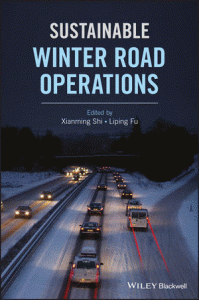Meetings and Events | Recent Publications | Research Reports | Research in Progress
Meetings and Events
AASHTO Committee on Maintenance Annual Meeting
The American Association of State Highway and Transportation Officials Committee on Maintenance will hold its annual meeting July 21 to 26 in Charlotte, North Carolina. The Winter Maintenance Policy Coordination Committee, which serves as the steering committee for the Snow and Ice Pooled Fund Cooperative Program (SICOP), will also meet at this event. Details.
[divider]
Recent Publications
Sustainable Winter Road Operations, March 2018 
This recently published book addresses a wide range of winter maintenance issues and includes contributions from several Clear Roads investigators. The book provides a comprehensive overview of best practices in sustainable winter road operations currently in use around the world. Topics include materials, processes, equipment, weather services, safety, mobility, strategic planning and performance measures. Book description.
“Liquids: Why You Have Always Used Them,” APWA Reporter, April 2018
Prewetting is a common practice to increase the ice-melting effects of road salt. This article discusses the importance of adding liquids to road salt and provides suggestions on how to increase the effectiveness and efficiency of the process. Article.
Research Reports
The Effect of Additives on the Low Temperature Ice-Melting Capacity of NaCl 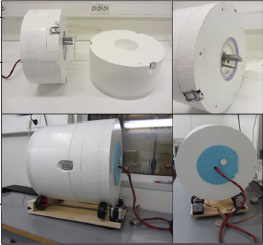
Transportation Research Record, April 2018
Researchers in Norway used a custom-made calorimeter to study the effect of additives on the low temperature ice-melting capacity of sodium chloride (NaCl). Magnesium chloride, calcium chloride, potassium formate, calcium magnesium acetate, and sugar were added to NaCl at −18°C. The chemicals were also tested individually. Paper.
[divider]
Experimental Study on Anti-icing and Deicing Performance of Polyurethane Concrete as Road Surface Layer 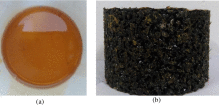
Construction and Building Materials, February 2018
In this study, researchers in China investigated the deicing and anti-icing performance of polyurethane concrete pavement surface layers. Laboratory test results showed that polyurethane concrete has greater specific heat than asphalt concrete and can significantly retard ice formation. Abstract.
[divider]
Investigating Frost Heave Deterioration at Pavement Joint Locations 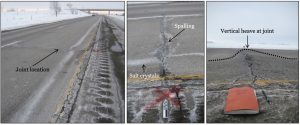
Journal of Performance of Constructed Facilities, April 2018
Frost heave can cause severe joint deterioration in concrete pavements. Researchers investigated the frost actions of deteriorated pavements, used temperature sensors embedded in pavements to determine local freeze-thaw conditions, and evaluated the frost-heave and thaw-weakening susceptibility of three pavement foundation materials. Abstract.
[divider]
Investigation of Alternative Deicers for Snow and Ice Control 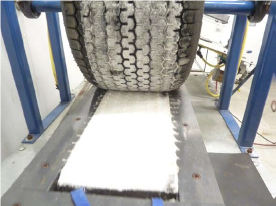
Center for Environmentally Sustainable Transportation in Cold Climates, University of Alaska Fairbanks
This research investigated the performance of potassium succinate (KSu) as an alternative deicing agent to sodium chloride (NaCl). Laboratory tests showed that KSu functions as a deicing agent only at -5°C (23°F) or higher, and has a slightly lower ice-melting rate and similar friction performance compared with NaCl. Report.
[divider]
Estimating the Application Rate for Liquid Chloride Products Based on Residual Salt Concentration on Pavement
Center for Environmentally Sustainable Transportation in Cold Climates, University of Alaska Fairbanks 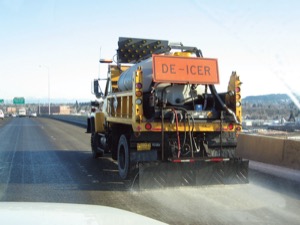
Researchers conducted laboratory tests to determine the level of chloride left behind from salt brine used on asphalt and concrete pavements after snowplowing. Less chloride was found on asphalt pavement than on concrete, and more chloride was present on both types of pavements in warmer temperatures. Report.
[divider]
Assessment of Joints in Concrete Pavements Exposed to Different Winter Conditions 
Journal of Performance of Constructed Facilities, April 2018
Deicing salt solutions applied to roads can contribute to premature deterioration in areas adjacent to joints in concrete pavements, although the root causes are not fully understood. Researchers in Canada found that deterioration on regional roads was caused by a combination of physical and chemical factors due to interactions between salts, freeze-thaw cycles, and the pavement. Abstract.
Research in Progress
Accumulated Winter Season Severity Index (AWSSI) Enhancements in Support of Winter Road Maintenance 
Clear Roads Project 16-02
The Accumulated Winter Season Severity Index (AWSSI) is a straightforward, publicly available tool developed by the University of Illinois using non-proprietary national data that is available from the National Oceanic and Atmospheric Administration. Researchers will enhance and modify the tool to allow for historical and current winter data comparison and provide better correlation of winter severity index to winter maintenance costs. Project description.
[divider]
Expanding Landowner Adoption of Snow Control Measures to Improve Public Safety and Achieve Cost Savings Through a Better Understanding of Landowner Knowledge, Attitudes, and Practices 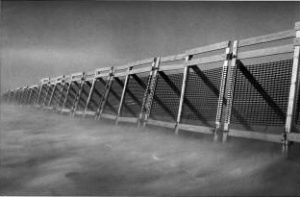
Minnesota DOT
This research aims to reduce blowing and drifting snow problems by working with and understanding landowners’ knowledge, attitudes and practices on the issue. Researchers will design an outreach plan to promote greater adoption of snow fences to improve public safety and increase cost savings. Project description.
[divider]
Reducing Winter Maintenance Equipment Fuel Consumption Using Advanced Vehicle Data Analytics 
Minnesota DOT
This research will explore how in-use vehicle data can be used to help reduce snowplow vehicle fuel consumption and lower operating costs. Project description.
[divider]
To be notified when new issues of this newsletter are posted and to receive the latest Clear Roads news and project updates, join our mailing list.

